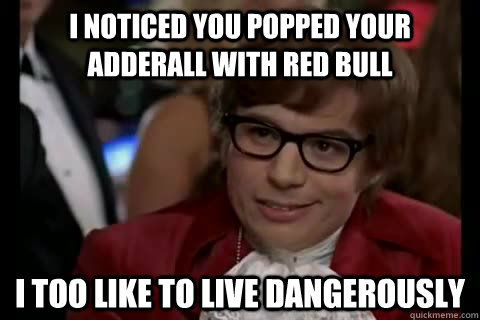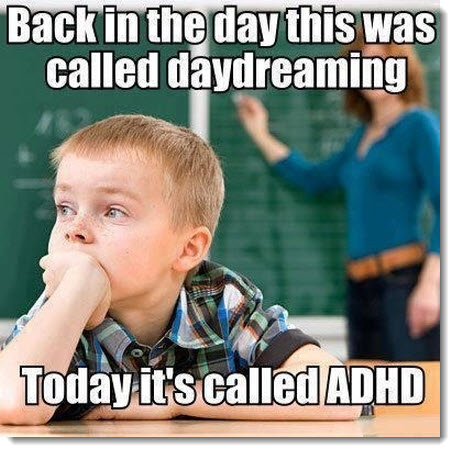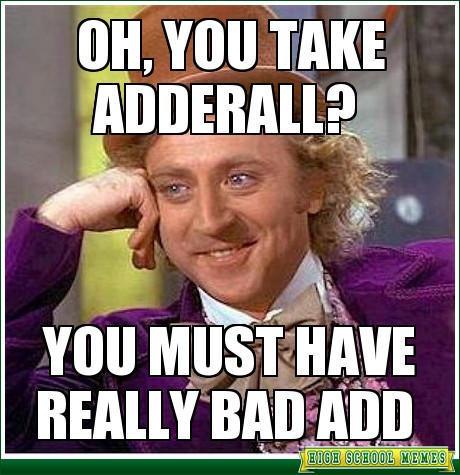Understimulated and Overmedicated: The Problem with ADHD Diagnoses and Adderall
By:
The millennial generation is not known for its attention span. For that reason, I'll try to make this short. We have grown up on super-consumable Internet content with immediate rewards. Think Buzzfeed lists and our endless obsession with GIFs for evidence. We are also, without a doubt, the most medicated generation when it comes to the treatment of attention deficit disorders (and mood disorders, but that's a different story). Birthed out of this pill prevalence is another problem: the use of prescribed stimulants as study drugs on college campuses. The whole situation raises a lot of difficult questions and it's time we start giving this problem the attention it deserves.

Let's start with the status quo. Attention deficit hyperactivity disorder (or ADHD) is the most prevalent psychiatric illness of young people in America, affecting 11% of children between the age of 4 and 17 . That means that the rate of ADHD. increased by 5% every year from 2003 until 2011. According to the Centers for Disease Control and Prevention, 6.1% of young people were taking some ADHD medication in 2011, a 28% increase since 2007. Now to really get your attention -- more than 10,000 children at the ages of 2 and 3 were found to be taking these drugs. Preschool just got a lot more competitive.

Many people, myself included, feel compelled to ask: Are all these diagnoses legitimate? In light of this growing epidemic, we can't help but wonder what has been in the water for the past decade that is preventing kids from focusing? At what point can we tease out the cases that are truly clinical and those that are merely personality quirks or cultural tendencies? Indeed, a recent NY Times article confirmed that many of the traits that characterize ADHD were actually evolutionarily adaptive when our species survived as nomadic hunter-gatherers. Says author Richard Friedman,
"In such a context, having a rapidly shifting but intense attention span and a taste for novelty would have proved highly advantageous in locating and securing rewards--like a mate and a nice chunk of mastodon."
I'll save you some time and a Google search and tell you that a mastodon is just a large elephant-like mammal that is now extinct. So ADHD is a real thing in that it affects functioning and that these symptomatic traits have been evolutionarily selected. Where does that leaves us when we start to talk about stimulant abuse on campus? Let's figure this out.
Make no mistake that there is certainly a specific type. More often the not, the average stimulant abuser (who is not prescribed the medication) is white, a member of Greek life, and the owner of a mediocre GPA. But that does not make the problem any less rampant. According to a 2012 study published in the Journal of American College Health, two thirds of college students are offered Adderall and other prescription stimulants by their senior year. Half of that group (or 31% overall) accept the offer. In the same study, it was found that 74% of college nonmedical users get the drugs from a friend with a prescription. And if that wasn't easy enough, a study from the University of Kentucky found that students could fake a diagnosis of ADHD after spending five minutes on Google. That something even perennially distracted millennials can sit through.

These are staggering figures, yes, but most likely we are guilty of the same desensitization as the students. We may forget that Adderall and Ritalin are DEA Schedule II substances. That puts them right next to cocaine and means they have 'high potential for abuse" that can "lead to severe psychological or physical dependance." According to the National Survey on Drug Use and Health, a terrifying 90% of college students who use Adderall non-medically also reported binge drinking. Long term use of alcohol and Adderall can lead to "psychological issues such as paranoia, anxiety, and severe depression." If there is one thing this generation does not need it's another mental illness to worry about.
Where does that leave us? We want to give students who genuinely struggle with ADHD the same opportunities as their healthy counterparts, and yet we have to police these medications. Stimulants in school act as steroids do in sports, making the competition unrealistic and unfair -- not to mention the threat they pose to students' emotional and physical well-being. We need more exhaustive diagnostic tools that aren't impersonal checklists and surveys. We cannot have our clinicians liberally writing these prescriptions to any student who shows an interest. We need to change this culture. We need to pay attention.
